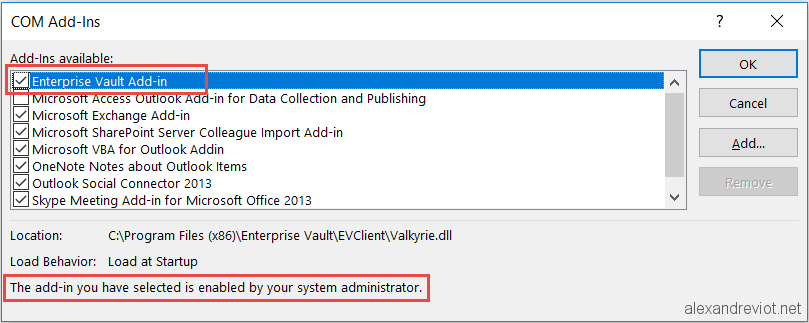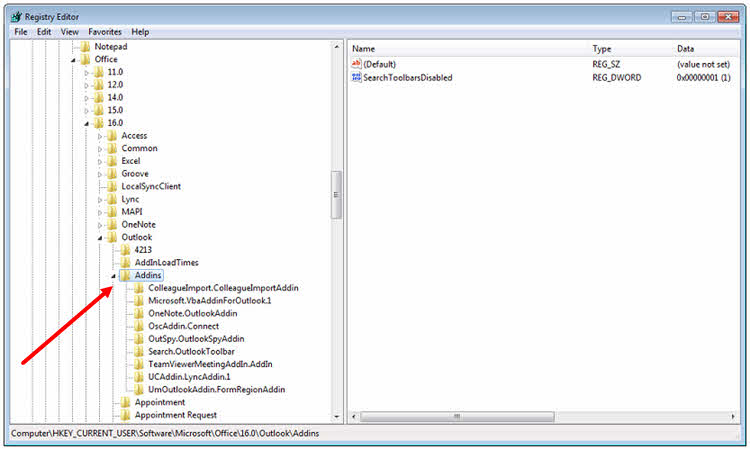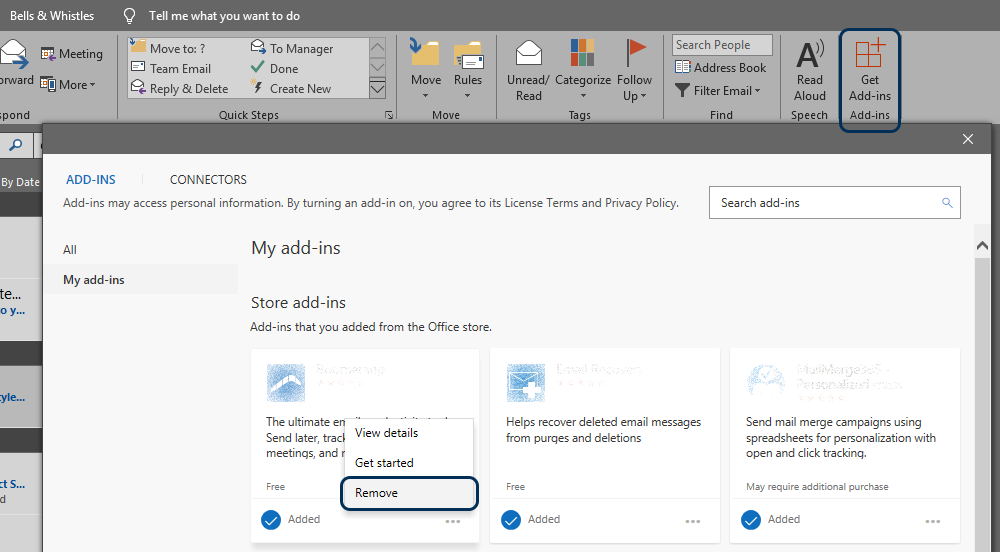

- #Manually remove outlook plugins install#
- #Manually remove outlook plugins upgrade#
- #Manually remove outlook plugins windows#
When we installed software, Windows will surely inform us of this choice. Maybe many people haven’t paid attention to a choice during installing software. The main reason why we cannot remove Add-In is that the Add-In is installed for all users on this computer, not the current users. Why we have no right to remove Outlook Add-In That is to say, we, common users, have no right to remove them. However, as removing, we will see a dialog which tells us that only administrator can connect or disconnect the installed Add-In.

But sometimes we may meet some problems, such as meeting request always stuck in Outbox, which requires us to check and remove some Add-Ins. If we haven’t yet encountered any errors involving Add-Ins, we could certainly neglect them all the time. Since Add-In is seldom concerned, it is usually located at secluded places. In fact, Add-In is an indispensable element in any software. When it comes to Outlook Add-Ins, chances are that many people would be perplexed about them, and even have never noticed them. In this article, we will look at the reason and solutions. So, deleting Extend.Dat may be needed.When we attempt to remove Outlook Add-In, an alert about errors will arise.

#Manually remove outlook plugins upgrade#
But even if you upgrade successfully from ePO, the Extend.Dat file may still list the old add-on which still needs to be removed.
#Manually remove outlook plugins install#
Yes, a MID version can be constructed to install VSE without the email scanner Add-on. As Sk1dMARK suggested, unchecking that box, will disable the currently installed add-in, but Extend.dat may not be up to date with that change. Note that this command deletes Extend.Dat from multiple user (profile) directories to which the logged in user has sufficient rights.ĮPO can be used to upgrade VSE. In order to clean up multiple users (profiles) I use a command like this: del /f /s /q "%UserProfile%\.\Extend.dat" This could also be added to a Login Script. After the VSE setup is run, I follow up with the deletion of Extend.Dat. I usually install VSE as part of a batch file. To that end, I have successfully deleted the Extend.Dat file as part of the 'upgrade' process. Unfortunately, Outlook cannot be running when the deletion is attempted as Extend.dat may be locked. Now, Extend.dat is in-sync with the actual add-ins installed. Outlook rebuilds Extend.dat by using the correct list of Add-ins listed in the registry. Extend.Dat is automatically rebuilt the next time Outlook is launched. In reality, Extend.Dat needs to be deleted. At that time or sometimes a bit later, Outlook may complain that the Outlook is not working correctly and incorrectly suggest that Outlook needs to be rebuilt. Outlook uses the info in Extend.dat in preference to the info listed in the registry without a check for correctness. However, after removing or changing an add-in, the Extend.Dat file may not be in-sync with the information in the registry. The improvement is suppose to be faster than reading the registry for the same information. It's purpose is to increase performance of Outlook during the launch process. Outlook stores the 'add-ins' in a cache file called Extend.dat locally. Sk1dMARK's reply will help greatly, but you may still have an error message at the client side due to the design flaw (in my humble opinion) built into Outlook (Extend.Dat). I think that should work via the policy you can see in my attachment. I want to disable the Outlook Scan Addin global in my company.


 0 kommentar(er)
0 kommentar(er)
